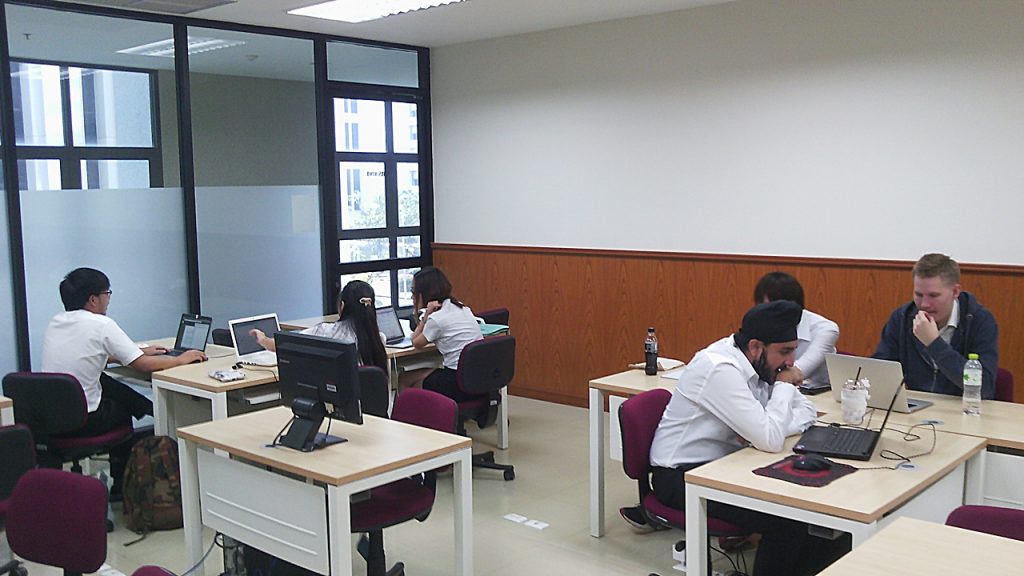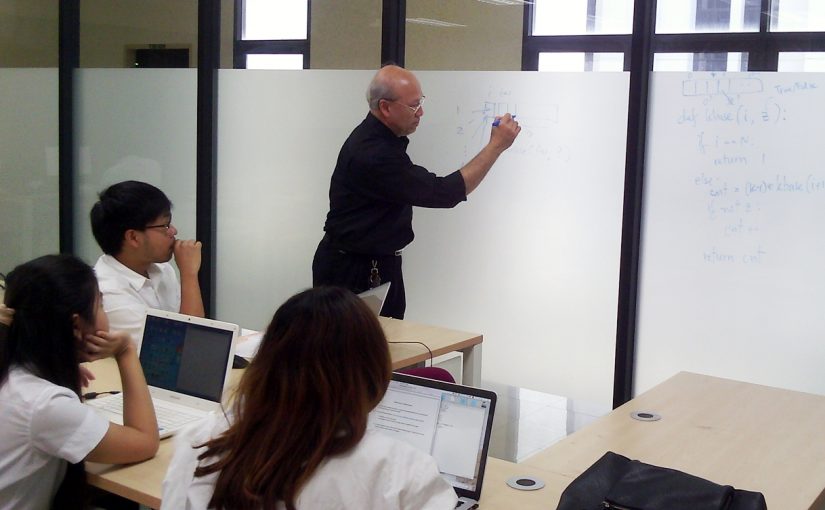It is quite well known that in general, students capture less than half of a lecture’s main ideas. Without reviewing the material, after a few weeks, students retain probably less than 10% of what they were lectured. While many lecturers hope that their classes are exception, that fact is – few classes really are.
I have been aware of this problem for years, and have explored and experimented with many approaches to improve upon the typical lecture-based class. At least, in the field of Computer Science and Information Technology, I have eventually identified a lock. Bluntly speaking, the lock is the centralized nature of the lecture-based system. The lecturing expects students to completely synchronize with the lecturer’s presentation. Although this is possible, it is normally improbable. Particularly in the class that there exists diversity of students’ capabilities for interpreting the technical contents, it is unlikely that there would be many students that synchronize with lecturer to the point that they understand the lecture all along. A typical scenario is that many students would choose to stay passive in the classroom and hope that they can study by themselves later. In other words, the lecturing does not effectively induce “learning” in the classroom.
With the existence of globally online materials, students could find that attending the lecture class is not a necessity. There are an abundance of alternative presentations for each knowledge content and students can choose ones that fit their ways of perceiving. On the other hand, by combining this availability with proper modification to classroom methodology, the role of instructor or teacher can be effectively turned to focus on the “learning” of the students in the class. The teacher can become more effective in contributing his or her unique quality in the class, such as his or her depth of interpretation, critical thinking, and techniques for bridging the theories to the real world.
Such a classroom will introduce a decentralized learning environment. Each student will be facilitated to learn, with the teacher being the guide to the in-depth interpretation as well as broadening the viewpoints of the contents through application.
I have applied these concepts in both the undergraduate-level and graduate-level courses that I have taught for a few semesters, and the results have been very promising, particularly in seeing that students’ learning has been in active mode. I also find that the method can be as effective with theory-oriented course as with practice-oriented course. As an example, the following guideline is how I found to bring remarkable improvement to the CS3201 Algorithm Design course that I have taught since 2014.
On each topic to be covered,
- Create a problem, as real-world as possible, in which a good solution would be achieved through the understanding and application of the intended topic.
- Break down the topic into manageable subtopics to learn.
- Develop a worksheet that guides the development of solution through learning each subtopic.
- Adequate resource and guidance must be provided so that each student can learn each subtopic at his or her own pace.
- A conceptual realization, a conclusion, or a development of partial solution must be identified as the goal of learning each subtopic.
- Take the role of teacher as a combination of the following functions.
- Facilitating resources in the learning process
- Inducing the learning of each step through questioning and clarifying
- Intervening when struggling occurs
- Summarizing and integrating the learning outcome both for theoretical and practical views
As a teacher, I feel that my time in the class becomes much more productive. However, a radical change in the way a teacher prepare and the way students approach each class are required. It is also best that seating and equipment in the classroom be redesigned to accommodate this active learning concept.

I have proposed to develop classrooms for active learning to the university president, and got his support. VMS is expecting that two classrooms will be ready before semester 1/2017 and a selected set of courses is also preparing new materials to effectively utilize the classrooms. Adopting new methodology will take time to mature. But from my personal experience, I foresee much more productive results right from the initial phase of transition.
